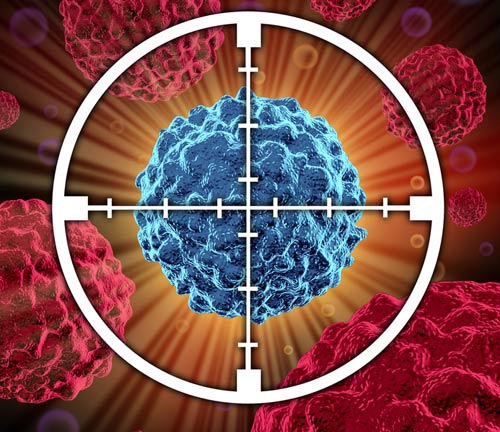Researchers in Japan say they have developed a novel method to deliver vaccines that successfully stifled tumor growth when tested in laboratory mice. The key, they report in ACS Nano (“Nanogel-Based Immunologically Stealth Vaccine Targets Macrophages in the Medulla of Lymph Node and Induces Potent Antitumor Immunity”), is in the vaccine's unique stealthy nanoparticles.
Hiroshi Shiku, M.D., from the Mie University Graduate School of Medicine, and colleagues explain that most cancer vaccine candidates are designed to flag down macrophages and dendritic cells that signal killer T cells to attack tumors. The problem is that approaches based on targeting these generally circulating immune cells have not been very successful.
But recent research has suggested that a subset of macrophages only found deep inside lymph nodes could play a major role in slowing cancer, according to Dr. Shiku. But how could one get a vaccine to these special immune cells without first being gobbled up by the macrophages and dendritic cells circulating in the body? Dr. Shiku’s team wanted to see if stealthy nanoparticles they had developed and clinically tested in patients might hold the answer.
The researchers injected the nanoparticles into mice. They found that the particles, which have no electric charge or surface molecules that would attract the attention of circulating immune cells, were able to enter the mice's lymph nodes. But once inside the lymph nodes' core, the special kind of macrophage engulfed the particles. When molecules for signaling killer T cells were put inside the nanoparticles, they hindered tumor growth far better than existing vaccines.
“The nanogel-based vaccine significantly inhibited in vivo tumor growth in the prophylactic and therapeutic settings, compared to another vaccine formulation using a conventional delivery system, incomplete Freund’s adjuvant,” wrote the investigators. “We also revealed that lymph node macrophages were highly responsive to TLR [toll-like receptor] stimulation, which may underlie the potency of the macrophage-oriented, nanogel-based vaccine. These results indicate that targeting medullary macrophages using the immunologically stealth nanoparticulate delivery system is an effective vaccine strategy.”
Researchers from the Kyoto University Graduate School of Engineering, the Japan Science and Technology Agency, and ImmunoFrontier were also involved in the study.


